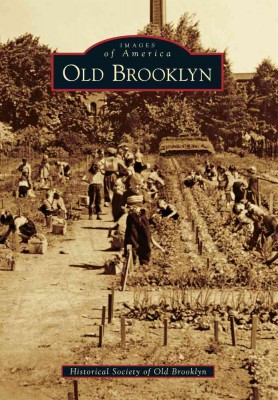| Old Brooklyn Contributor(s): Historical Society of Old Brooklyn (Author) |
|
 |
ISBN: 1467111929 ISBN-13: 9781467111928 Publisher: Arcadia Publishing (SC) OUR PRICE: $19.79 Product Type: Paperback - Other Formats Published: September 2014 |
| Additional Information |
| BISAC Categories: - History | United States - State & Local - Midwest(ia,il,in,ks,mi,mn,mo,nd,ne,oh,sd,wi - History | Social History |
| Dewey: 977 |
| LCCN: 2013953155 |
| Series: Images of America (Arcadia Publishing) |
| Physical Information: 0.5" H x 6.4" W x 9.1" (0.70 lbs) 128 pages |
| Themes: - Geographic Orientation - Ohio - Cultural Region - Midwest |
| Descriptions, Reviews, Etc. |
| Publisher Description: There's more than one Brooklyn in the United States, but with the exception of the one in New York, Old Brooklyn in Ohio has the most interesting history. Based on the confluence of older Native American trails, Old Brooklyn was originally settled in 1814 as the hamlet of Brighton, originally laid out on land belonging to a farmer named Warren Young. Another incorporation in 1889 renamed the village South Brooklyn, eventually being annexed by the city of Cleveland in 1905 because of its successful light plant. Perhaps Old Brooklyn's biggest claim to fame was the introduction of greenhouse gardening by Gustave Ruetenik & Sons, giving the area the title "Greenhouse Capital of the United States." After its appropriation into Cleveland, Old Brooklyn's commercial development reached its apex, and also became home to the Cleveland Metroparks Zoo in 1907. |
Contributor Bio(s): Historical Society of Old Brooklyn: - In 1982, a group of people from the Old Brooklyn neighborhood gathered at The Glenn Restaurant to form a historical society named the Four Corners Guild. In 1986, it became the Historical Society of Old Brooklyn. Its mission is to attract people with a common interest in the history of Old Brooklyn to collect, catalogue, and display items of historical significance; provide housing, preservation, and safekeeping of said items; support and promote the cause of historic preservation; and disseminate historical information to the public. |